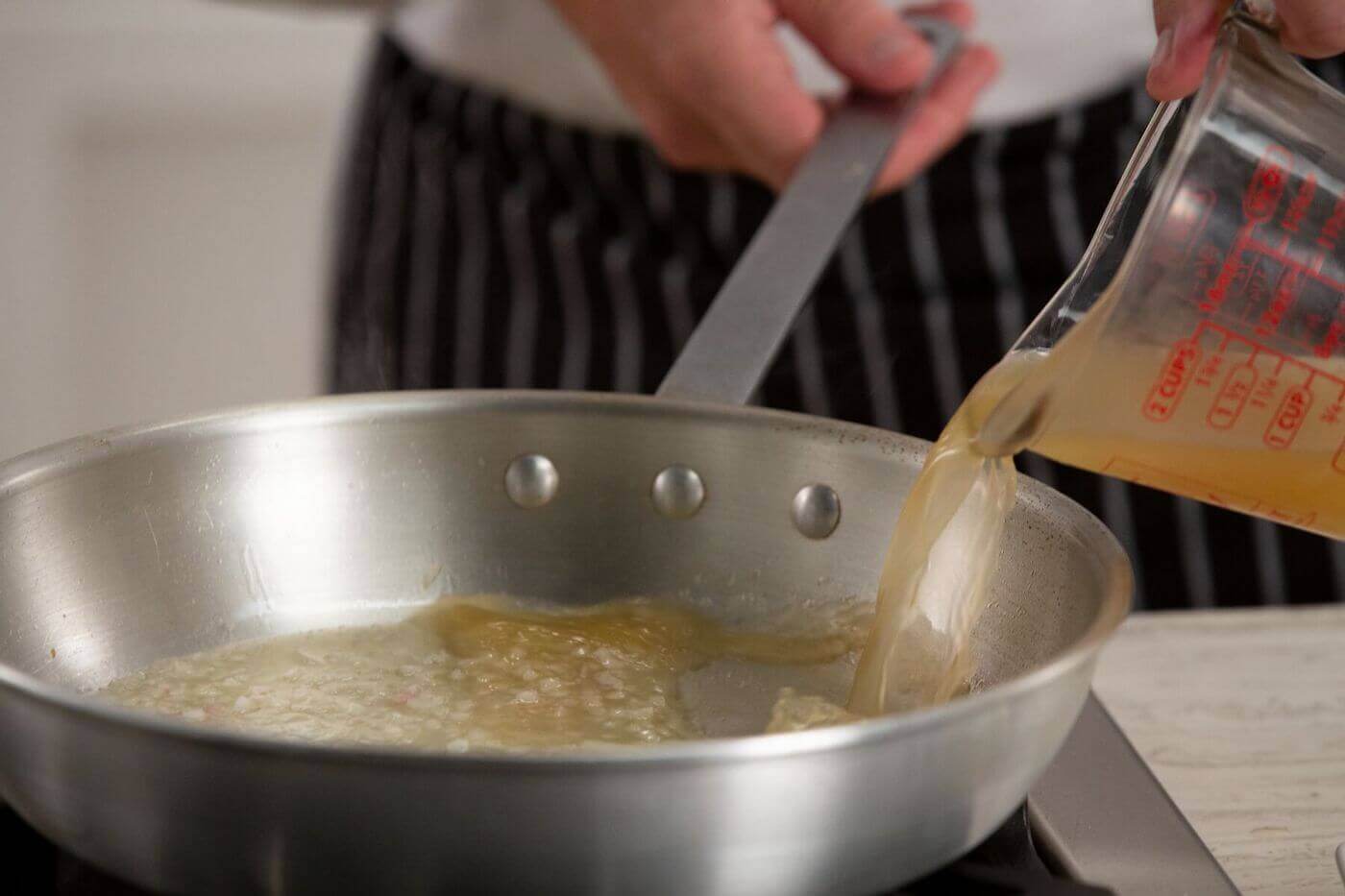5 Ways to Use Chicken Stock
While you may think of chicken stock as a humble base ingredient, this flavorful liquid is a key component of hundreds of dishes from around the world. So if you’ve found yourself with some extra stock, don’t think you’re limited to a pot of chicken noodle soup!
It can really pay off to start with the highest quality stock you can, no matter if you opt for a homemade or store bought option. With a flavorful stock in hand, you can be ready to make hundreds of dishes, including the following five.
1. Simmer a Warming Soup
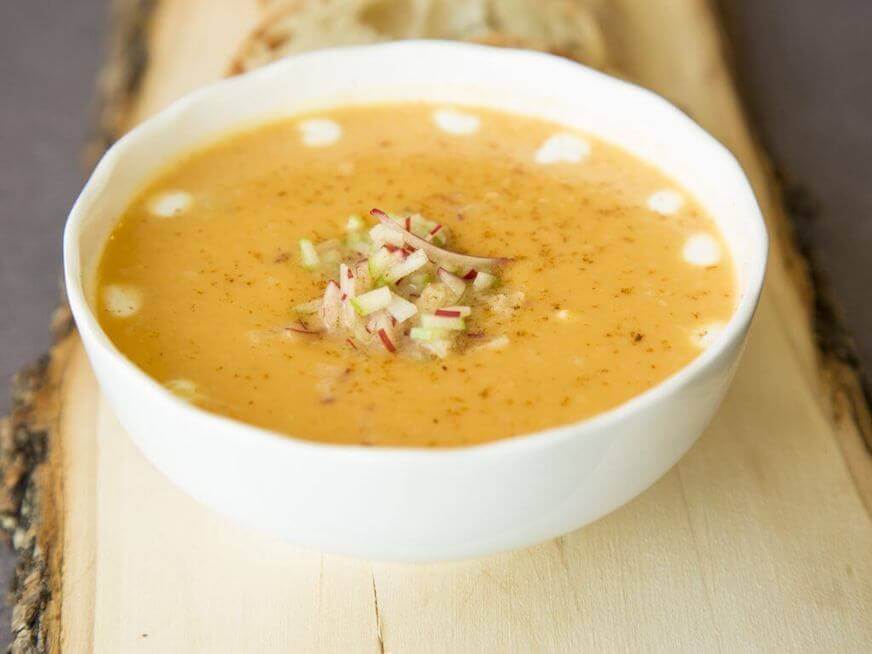
First, let’s tackle the obvious suggestion – make a soup! Start with a high-quality chicken stock and a well-tested recipe, spend some time in the kitchen, and you’ll be rewarded with a hearty meal to enjoy.
For a cheesy soup straight out of the Midwest, try this Wisconsin Cheddar and Beer Soup. It combines stock, beer, cheese, and spices for a soup that will warm your belly and stick to your ribs.
If you’re looking for something a bit lighter but equally delicious, you might enjoy this Sweet Potato and Apple Soup. By combining two of our favorite cool-weather produce items, you’ll end up with a soup that’s a satisfying balance of sweet and savory.
“Stock is everything in cooking, at least in French cooking. Without it, nothing can be done. If one’s stock is good, what remains of the work is easy. If, on the other hand, it is bad or merely mediocre, it is quite hopeless to expect anything approaching a satisfactory result.”
Chef Auguste Escoffier
2. Stir Up a Creamy Risotto
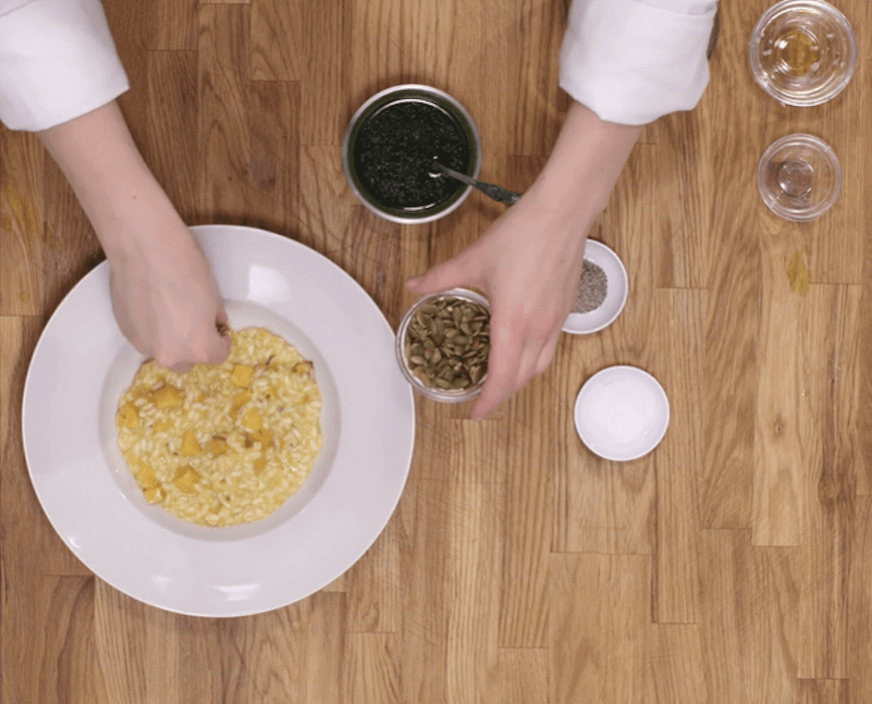
If there’s one dish that illustrates the rewards of patience, it’s risotto. By slowly adding stock to a pot of simmering grains, you can coax the grains to release their starches and form a delectably creamy dish.
If you want to make a melt-in-your-mouth risotto, don’t rush the process. Although risotto takes less than half an hour to cook, you must be willing to add the stock slowly in order to obtain this dish’s ideal texture. But don’t worry about constantly stirring – while you don’t want the grains to stick to the bottom of the pan, over stirring can lead to a displeasing gummy texture.
That said, you can find some creative twists in modern risotto recipes. This dish is traditionally made with short-grain Arborio rice, but you can also use farro, oats, and other grains. This risotto recipe combines sweet butternut squash and nutty barley for a cozy, satisfying meal.
Culinary & Pastry Career Survey
Culinary & Pastry Career Survey
What's your ideal culinary career? Answer 20 simple questions and see if your dream career gets revealed to you.

We’ve compiled of all of the essential questions into one handy guide: Career options, description of skill requirements, and more!


3. Make a Rich Cassoulet
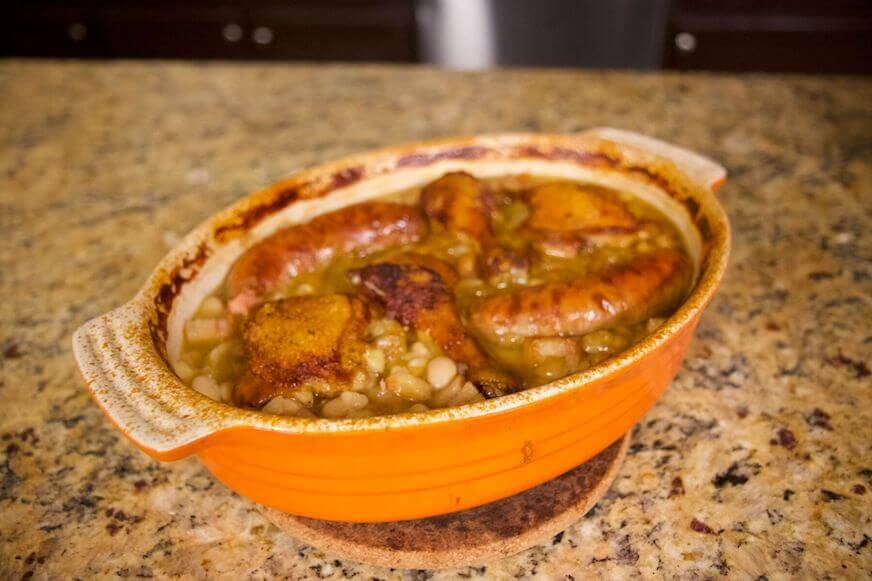
When the nights are long and cold, there’s nothing quite like spending hours in the kitchen preparing a comforting cassoulet. This classic French dish is a hearty blend of confited poultry, umami-filled salt pork, rich sausage, and creamy white beans. All of the ingredients are bound together by a balanced chicken stock as well as a mix of herbs and spices.
Before you begin preparing a cassoulet, be aware that it’s a long process – you’ll need to cook the beans and cuts of meat separately and then allow them to meld together over the course of a few hours. So while this isn’t the best dish for a quick weeknight dinner, preparing it can be a delightful way to spend an evening at home. And the work will certainly be worth the reward.
4. Master a Classic Velouté
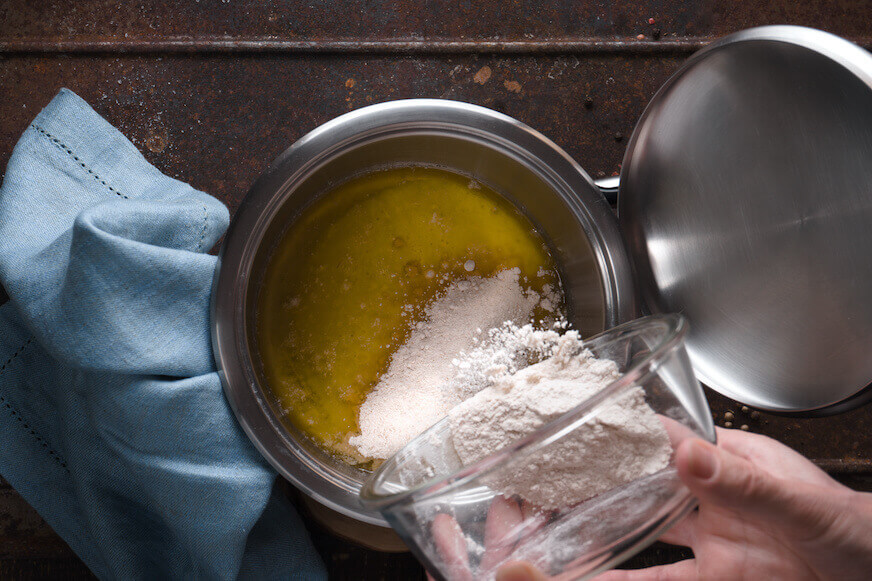
As one of the five mother sauces, learning how to make a proper Velouté is a key part of further exploring French cuisine. While the ingredients are simple – flour, butter, white stock, and seasonings – melding these ingredients together into the perfect Velouté can be a bit more challenging.
Traditionally, this sauce is made with veal stock. However, dietary restrictions and ingredient availability allow you to substitute other types of clear stock, including chicken stock.
Once you master a Velouté, you’ll be able to use it as the foundation for other sauces including white wine sauce, Normandy sauce, and Allemande sauce.
5. Braise Meat or Vegetables

Braising involves searing an ingredient over dry heat and then slowly cooking it in liquid. It’s the method used to create beloved dishes such as the French coq au vin and Italian osso buco.
When it comes time to braise, you can use any liquid, but popular options include wine, vinegar, beer, and chicken stock. Just remember that – like Escoffier claimed – the quality of your braising liquid will have a big impact on the final dish!
While cooks often turn to braising to tenderize tough cuts of meat, you can also braise vegetables, such as the tender celeriac pictured above.
Keep Improving Your Culinary Skills
If you need a little help creating an extra-creamy risotto or rich cassoulet, you’re in luck. Escoffier Home Gourmet and America’s Test Kitchen have teamed up to create outstanding online cooking classes. When you sign up, you’ll receive access to hundreds of recipes as well as personal feedback from a professional Chef Instructor.
After spending more time in the kitchen, you may find you want to turn your passion for food into a career. If that’s the case, consider learning more about our culinary degree and diploma options.
Ready to learn more about making the most of your ingredients? Read these articles next:
- Which Fruits and Vegetables Should You Refrigerate?
- How to Make Sauce Tomat
- Top Apps for Finding Recipes for Ingredients You Already Have
This article was originally published on May 10, 2016, and has since been updated.

